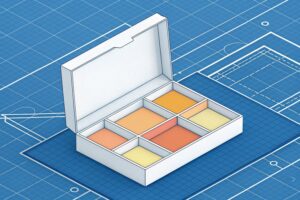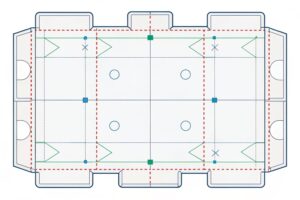What is Glassine Paper?
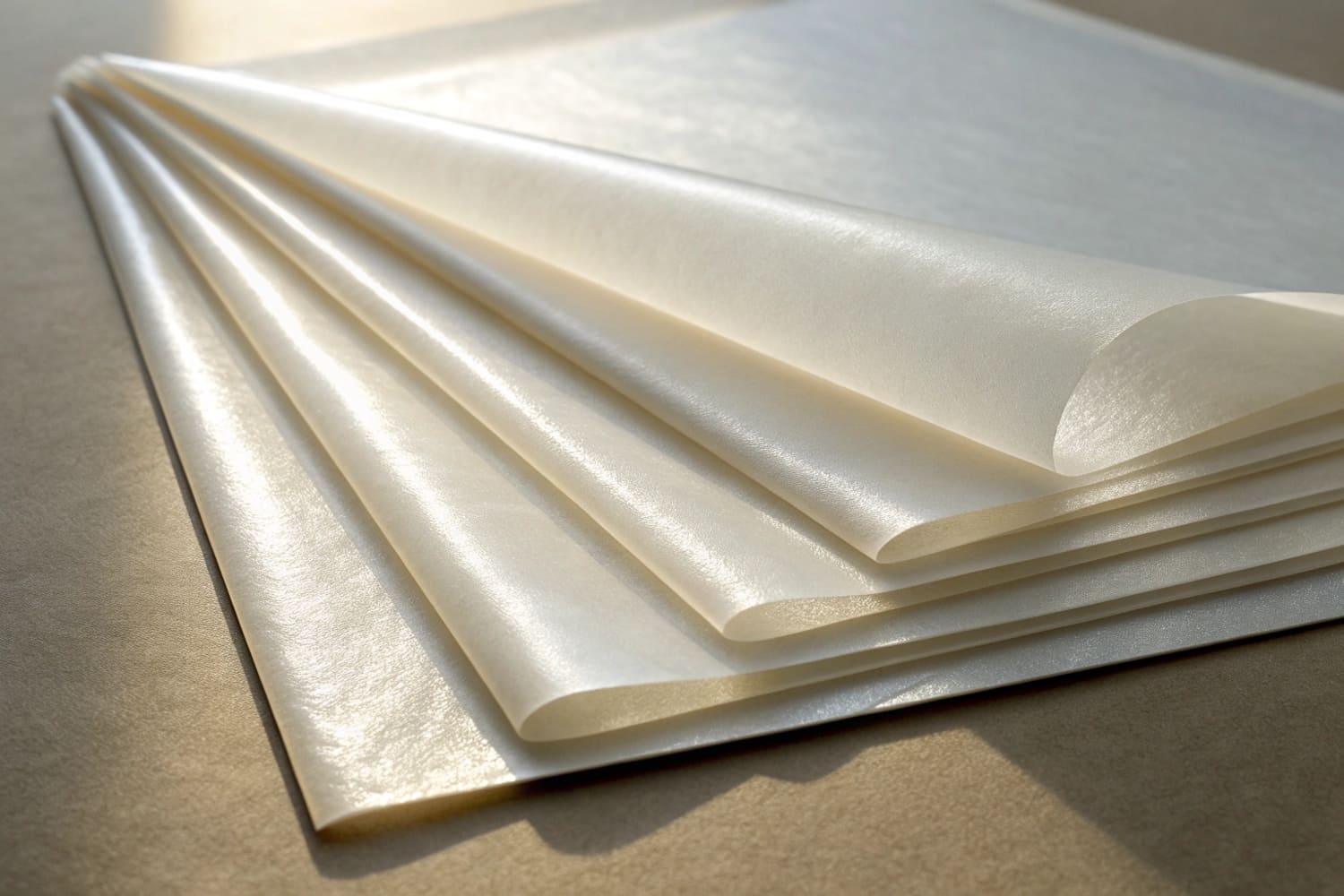
I fight smudges, dust, and scratches every day. Fragile prints hate warehouses. Retail deadlines do not wait. I need clean protection that ships flat and works fast. Glassine helps me win.
Glassine paper is a smooth, dense, translucent paper made by super-calendering cellulose fibers. It repels air and grease, handles light moisture, and releases cleanly. I use it as interleaving, sleeves, and protective wraps for printed cardboard displays.
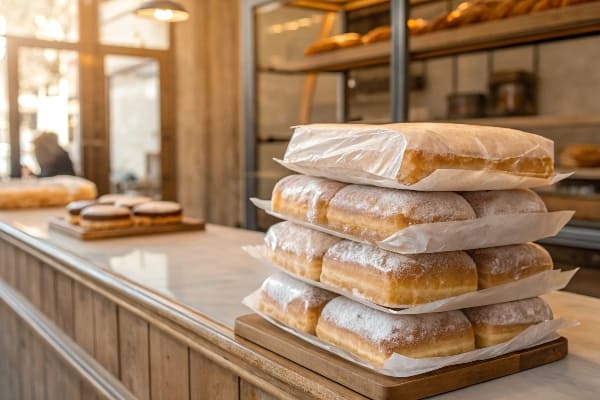
I will show what glassine is good at, where it fails, and what I pick instead when projects demand different traits. I will keep it practical, based on real orders.
What are the disadvantages of glassine paper?
Retail floors are messy. Humidity goes up. Forklifts shake pallets. A slick liner can help or hurt. I learned this the hard way on a holiday rollout.
Glassine paper has trade-offs: it blocks grease but absorbs ambient humidity, it tears when creased hard, it builds static, it can slip on smooth coatings, and silicone versions complicate recycling. It is not ideal for long wet exposure or heavy stacking pressure.
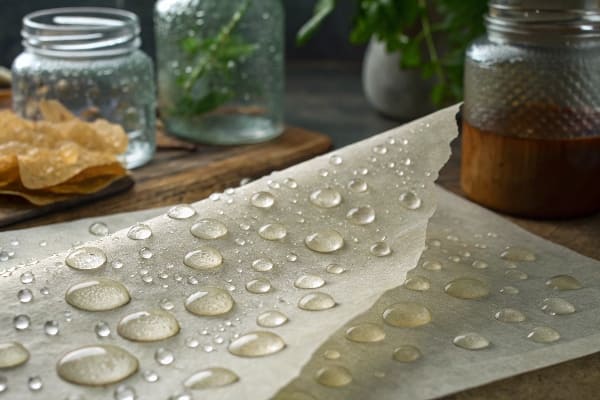
Where glassine1 struggles in real work
I love glassine for clean release, yet I never treat it as a miracle barrier. The sheet is dense, so it resists oil, but it is still paper. High humidity makes edges curl. Tight turns create micro-cracks. Static makes stacks cling and misfeed on auto lines. The surface is slick, so tall stacks may slip during transit unless I add corner locks or a kraft top sheet. Uncoated glassine recycles well, but silicone-coated release liners often need specialty recovery streams. Print results vary too. Full-bleed solids can scuff unless I use UV inks or add a slip sheet. For long voyages I choose heavier basis weights or switch to alternatives. My rule is simple. If the route is humid, the stack is tall, or the schedule is brutal, I test before I buy.
Quick view of drawbacks
| Issue | Why it Happens | Risk on Displays | My Fix |
|---|---|---|---|
| Humidity curl | Paper absorbs moisture | Edge lift in cartons | Shrink-wrap with desiccant |
| Tear at folds | Fiber densification | Corner cracks | Increase gsm / change fold |
| Static cling | Smooth surface | Double-feed | Air ionizer, jog stacks |
| Slip in transit | Low friction | Pallet shift | Kraft top + straps |
| Recycling limits | Silicone coating | Landfill risk | Uncoated where possible |
What is a substitute for glassine paper?
Some jobs need more friction, more opacity, or more water holdout. I pick the tool, not the label. My client only cares that the display arrives perfect.
Common substitutes include greaseproof paper, parchment, lightweight kraft, PE-coated paper, parchment-like baking sheets, PLA or cellulose films, and HDPE bags. I choose by barrier, friction, clarity, recyclability, and unit cost per shipped display.
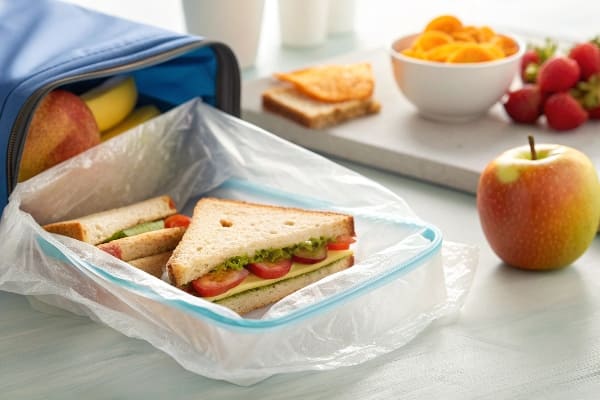
How I choose between substitutes
I start with the surface that needs protection. Gloss UV cartons scratch easily. Matte aqueous scuffs and shows streaks. Textured corrugate needs dust control more than slip. If I need more grip and simple recycling, I use light kraft interleaves. For stronger grease holdout around food accessories, I go with greaseproof. For heat or oven-adjacent demos, true parchment performs better. When moisture is constant, a thin PE-coated paper or a recyclable HDPE sleeve beats glassine. If the brand requires high clarity to show graphics in transit kits, I test PLA or cellulose film. I also score each option against our factory flow. Some films jam less on auto packers. Some papers die-cut faster. I never chase the cheapest sheet alone. I measure total landed cost per on-time, undamaged display.
Comparison at a glance
| Option | Barrier (Oil/Water) | Friction | Clarity | Recyclability* | Typical Use |
|---|---|---|---|---|---|
| Greaseproof2 | High / Medium | Medium | Low | Paper stream | Food-adjacent packs |
| Parchment | High / High | Medium | Low | Paper stream | Heat tolerance |
| Light Kraft | Low / Low | High | None | Paper stream | Anti-slip interleave |
| PE-Coated Paper | High / High | Medium | Low | Mixed / check local | Moisture routes |
| PLA/Cellulose Film3 | Medium / Medium | Low | High | Industrial compost / specialty | See-through kits |
| HDPE Bag | Medium / High | Low | High | Store drop-off (varies) | Dust and splash |
*Recycling and compost options vary by region. I confirm programs before I commit.
What do you use glassine paper for?
I ship printed displays worldwide. Surfaces must arrive clean. Edges must look sharp. A simple sheet often saves a reprint and a missed launch window.
I use glassine as interleaving between printed sheets, scratch guards for varnished panels, dust sleeves for kits, release liners for pressure-sensitive parts, and folders for samples and decals during approvals.

Practical uses that actually save money
I treat glassine4 like a surgical drape for print. It keeps stacks clean without lint. It releases without pulling ink when I use UV or well-cured aqueous coatings. I line foam trays with glassine to stop micro-abrasion on gloss cartons. I slide die-cut headers into glassine sleeves for sales teams. During prototyping, I interleave wet-trap test prints to prevent set-off while I run accelerated packing tests. For hunting gear displays, my buyer often includes coated metal parts. I wrap those in glassine to avoid oil marks on adjacent prints. When I kit pressure-sensitive hooks5, I use silicone-lined glassine as the release liner. It peels clean on the shop floor. For field photos, I pack an extra stack as emergency covers. One saved pallet pays for the whole run.
Usage map
| Use Case | Format | Tip from my floor |
|---|---|---|
| Interleave print stacks | Sheets cut to size | Add desiccant for sea freight |
| Scratch guard for gloss | Full-bleed sheet | Jog stacks to reduce static |
| Dust sleeve for kits | Simple glassine bag | Seal with low-tack label |
| Sample folders | Envelopes | Add kraft backer for stiffness |
| PSA release liner | Silicone glassine | Mark liner side clearly |
Is glassine paper the same as greaseproof paper?
Clients mix these names often. The sheets look similar in a rush. The performance is not the same. I clear this up on day one.
No. Glassine is super-calendered, translucent, and very smooth. Greaseproof is denser, more opaque, and tuned for oil holdout. Both resist grease, but glassine is slick and clear, while greaseproof offers better absorbency control and less slip.
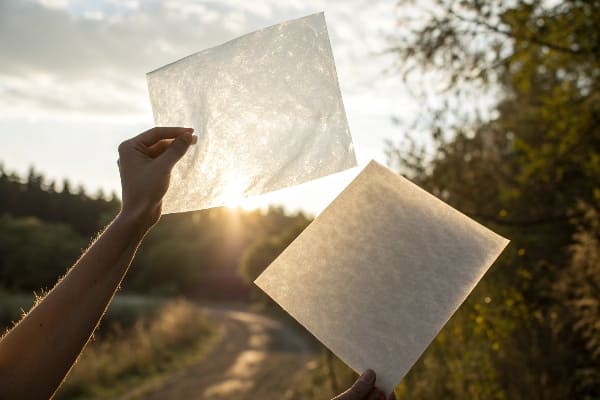
Key differences that change outcomes
Both papers start as refined pulp. The finish sets them apart. Glassine6 goes through heavy calendering. Fibers align and pores close. The sheet turns translucent and slick. Greaseproof7 relies on refining and sizing. It stays opaque and manages oils better under load. On my floor this means different risks. Glassine protects graphics and releases cleanly, but stacks can slide. Greaseproof grips better and holds oil, but it hides graphics and may not release as cleanly from fresh ink. For food-adjacent gear promos, greaseproof is safer around residues. For high-gloss carton protection, glassine shines. I match the sheet to handling, route, and finish. When teams argue, I run a timed abrasion and humidity test. Numbers settle debates fast.
Side-by-side
| Property | Glassine | Greaseproof |
|---|---|---|
| Look | Translucent | Opaque |
| Surface | Very smooth, low friction | Smoother than kraft, more grip |
| Oil Holdout | High | Very high |
| Water Behavior | Resists briefly, then wicks | Better sizing, steadier |
| Print Release | Excellent after cure | Good, watch set-off |
| Best For | Scratch protection, sleeves | Food-adjacent, anti-slip liners |
Conclusion
Pick the sheet for the route, the finish, and the deadline. Test small. Track damage rates. Let cost per perfect delivery decide the winner.
Explore this link to understand the full range of glassine’s properties and how to effectively use it in various applications. ↩
Explore the advantages of greaseproof paper for food packaging, ensuring quality and safety in your products. ↩
Learn about PLA and cellulose film’s eco-friendly properties and their applications in sustainable packaging solutions. ↩
Explore the advantages of glassine in printing to enhance your projects and save costs effectively. ↩
Learn how to utilize pressure-sensitive hooks for better results in your projects and improve efficiency. ↩
Explore the advantages of Glassine paper, including its translucency and smooth finish, ideal for various applications. ↩
Learn how Greaseproof paper effectively manages oils and residues, making it a safer choice for food-related products. ↩


